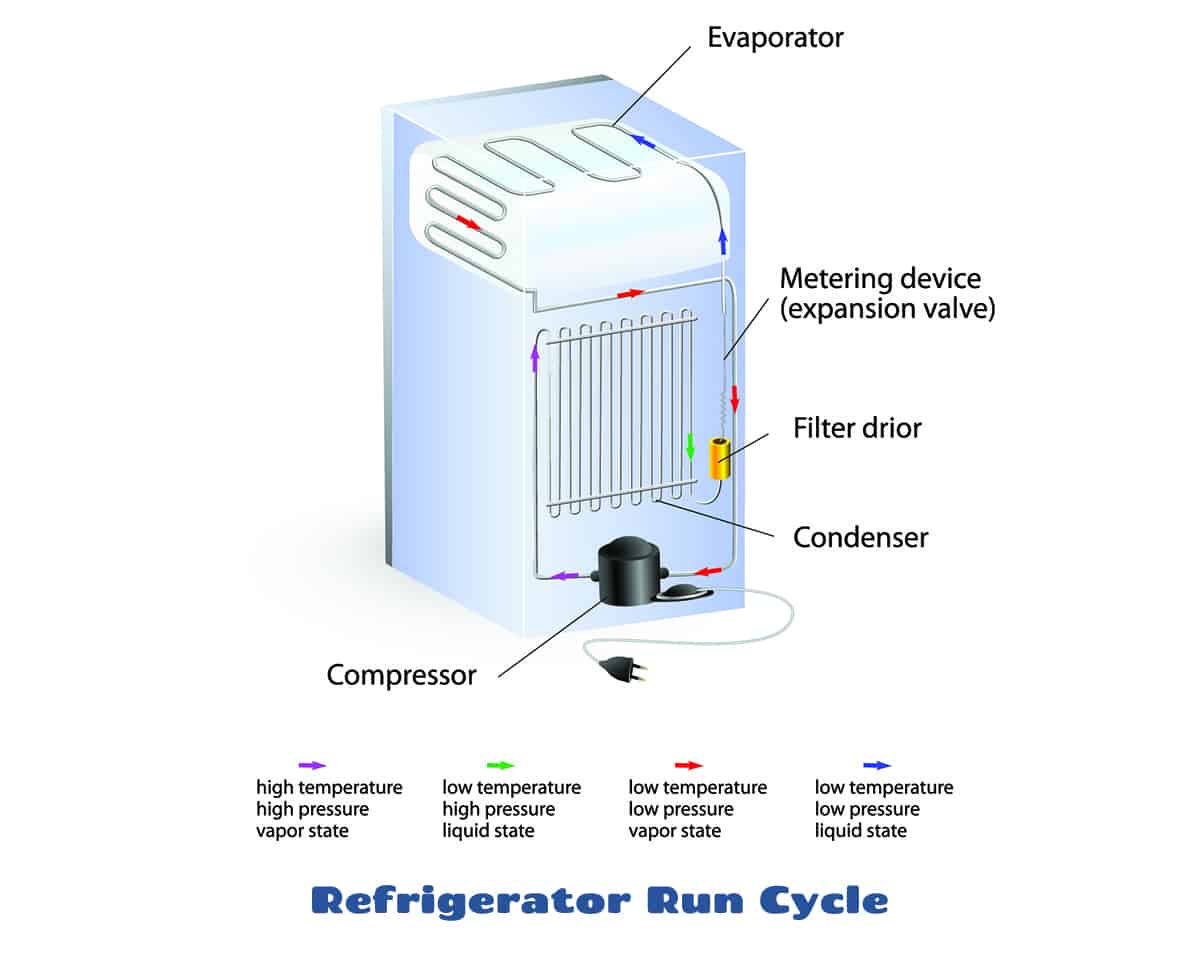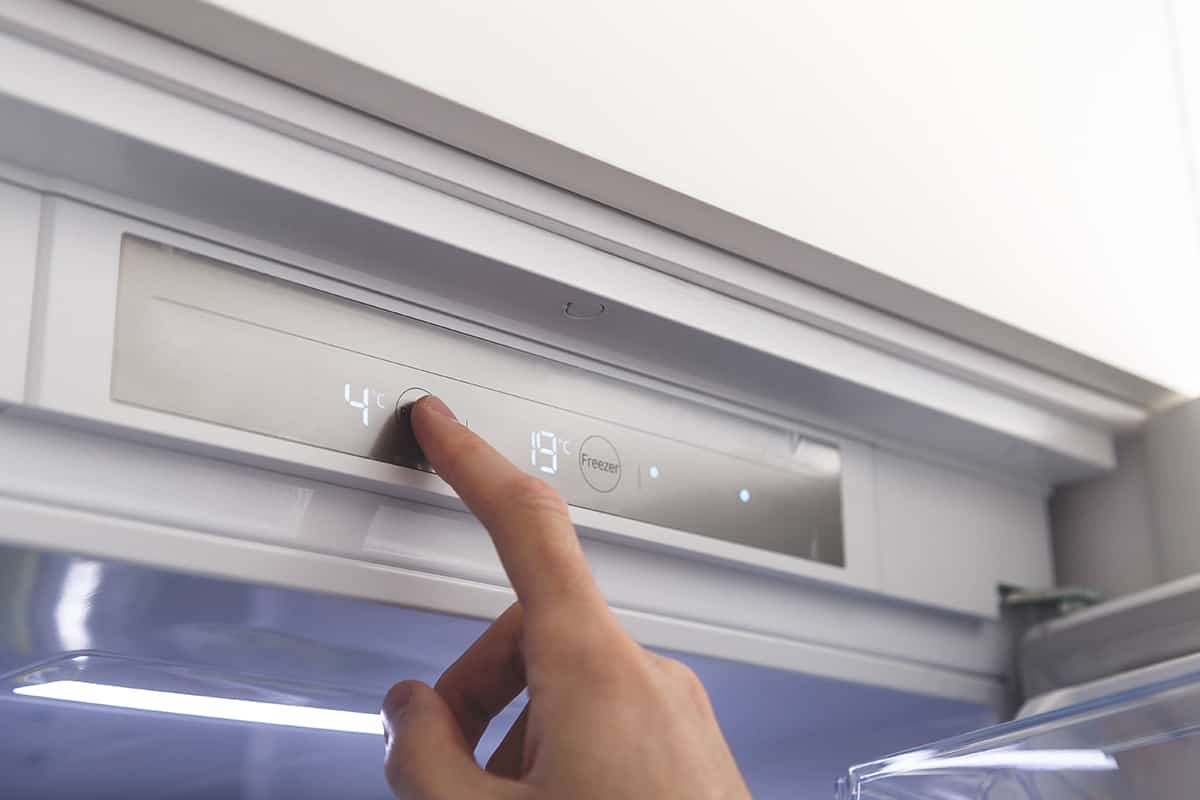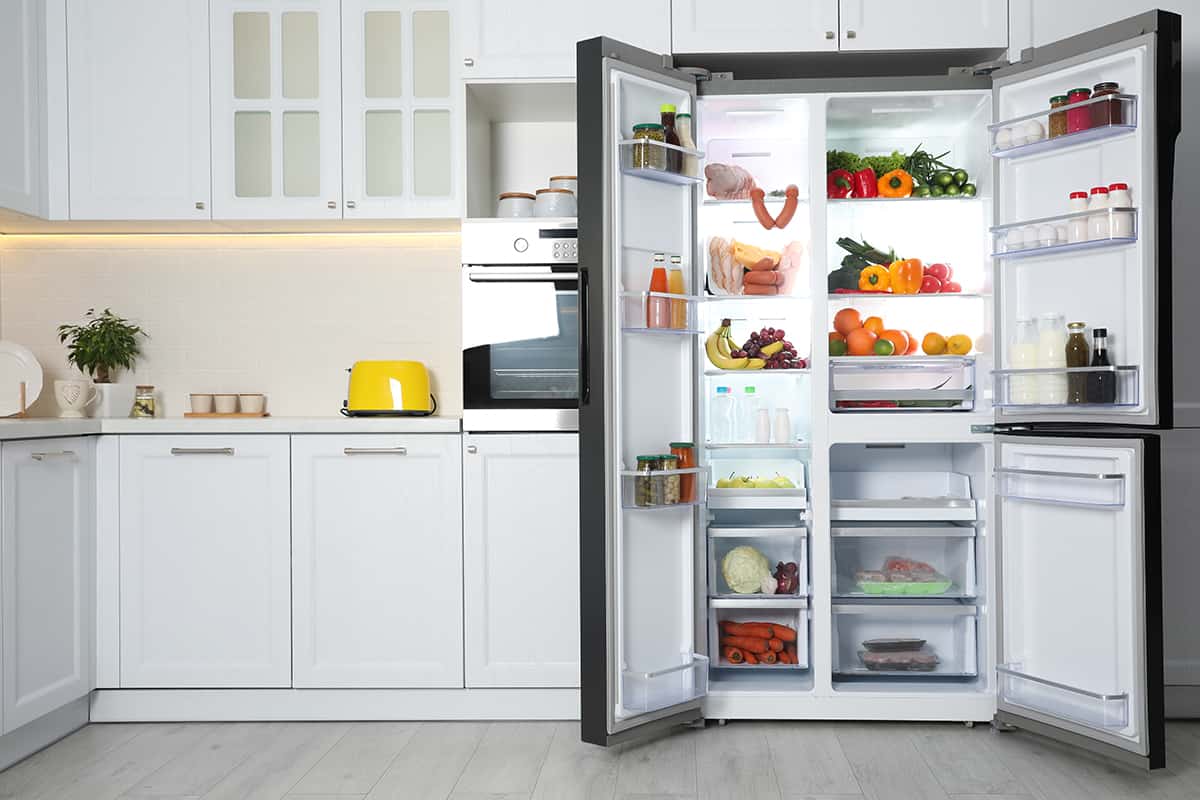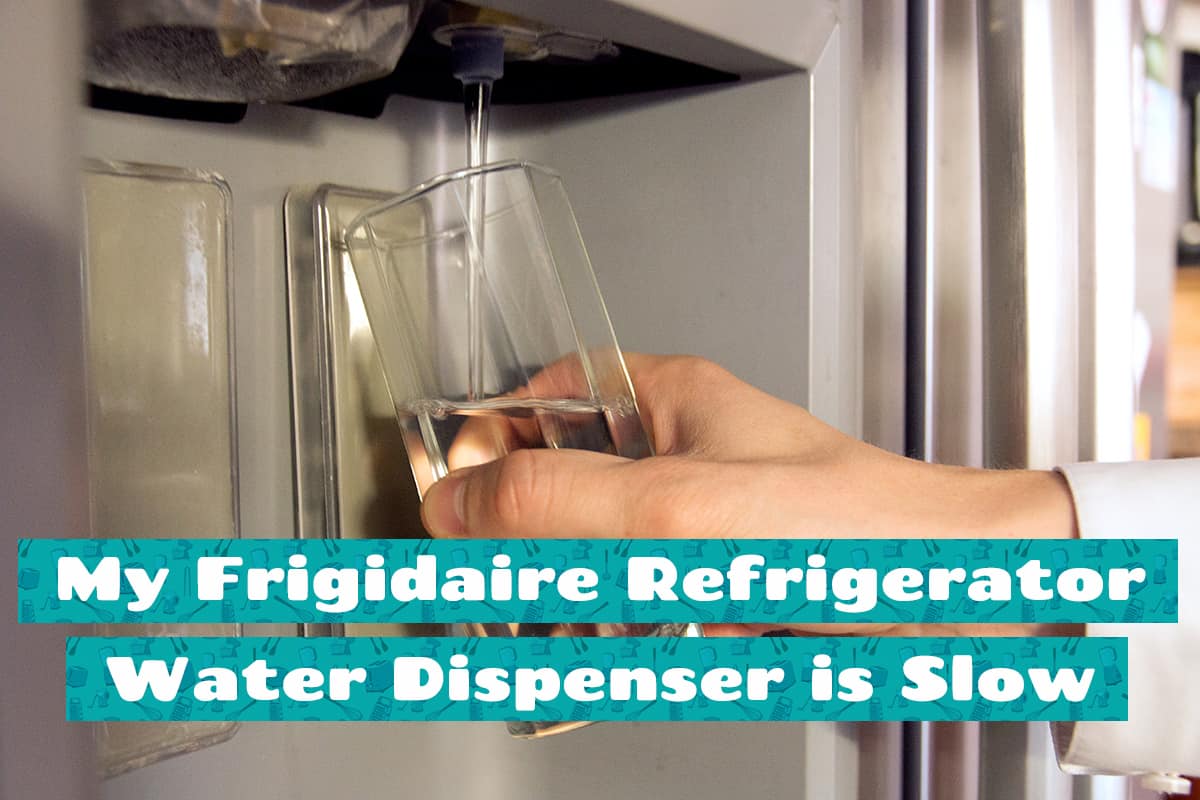Your refrigerator, one of the key appliances in your home, works round the clock to keep your food fresh and safe. The cycling on and off of your refrigerator, known as the ‘run cycle’, is a vital aspect of its operation. Understanding this cycle, and its duration, can help optimize its performance, increase efficiency, and even save on your energy bills.
Generally, a refrigerator should run for about 2 to 8 hours before shutting off. This is then followed by a defrost period, after which the cycle starts again. However, factors like the room temperature, how often the door is opened, and the model of the fridge can affect this duration.
In this guide, we will explore the run cycle of a refrigerator, the implications of an extended run cycle, and how you can control it.
Introduction to the Refrigerator Run Cycle

The run cycle of a refrigerator refers to the period when the refrigerator’s compressor is operating to cool the interior and maintain the set temperature.
Refrigerators work by moving heat from the inside to the outside using a refrigeration cycle. The compressor, the ‘heart’ of this cycle, compresses the refrigerant, causing it to become hot and high-pressure. This refrigerant then flows through the coils on the back or beneath the fridge, releasing the heat into the room.
The refrigerant cools down and evaporates, absorbing heat from the fridge’s interior in the process. The compressor then compresses this cooled refrigerant, and the cycle begins anew.
An important point to understand is that refrigerators don’t ‘create’ coldness; instead, they remove heat.
The Ideal Duration for a Refrigerator Run Cycle
On average, a refrigerator’s run cycle typically lasts between 2 to 8 hours, followed by a defrost period, after which the cycle starts again. This duration isn’t fixed but rather a range because many variables can affect the run cycle. However, if you notice that your fridge is running continuously for more than 8 hours without stopping, it might indicate a problem.
Implications of a Continuously Running Refrigerator
A refrigerator that continuously runs without cycling off can signify various underlying issues. Knowing the implications of this can help you maintain the efficiency and longevity of your appliance.
Why Your Refrigerator Might Be Running Too Long
If your refrigerator runs too long, it could be due to several reasons. High ambient temperatures, frequent door openings, a large amount of food, or the fridge’s temperature setting can all extend the run cycle. But if none of these conditions apply and the fridge still runs constantly, it might indicate one of the following problems.
- Thermostat Issues: The thermostat controls the temperature inside the refrigerator. If it’s faulty, it might not be able to signal the compressor to shut off, causing it to run continuously.
- Dirty Condenser Coils: Over time, the condenser coils at the back or bottom of your fridge can accumulate dust and grime. This can insulate the coils, making them less efficient at dissipating heat and causing the refrigerator to work harder.
- Leaky Door Seals: If the seals around your fridge door are damaged, cold air can escape, and warm air can infiltrate, causing your fridge to run longer to maintain the set temperature.
- Low Refrigerant Levels: The refrigerant is crucial for heat transfer. If its level is low, usually due to a leak, the fridge might struggle to reach the desired temperature, causing the compressor to run longer.
The Potential Risks and Damages Caused by Overworking Your Refrigerator
A refrigerator running longer than necessary can lead to several potential problems:
- Increased Energy Consumption: The longer your refrigerator runs, the more energy it uses. This can lead to a significant increase in your energy bills.
- Decreased Lifespan: Continual running can overwork the fridge’s components, particularly the compressor, leading to premature wear and tear and a shortened lifespan.
- Spoiled Food: If a continuously running fridge is a symptom of an inability to maintain the correct temperature, it could potentially lead to food spoilage.
- Noise Pollution: A refrigerator that’s always running can also be noticeably noisier, which can be a nuisance.
How Run Cycle Affects Energy Consumption
Energy efficiency is a key factor to consider when examining the implications of a continuously running refrigerator. As the fridge’s run cycle lengthens, it consumes more energy, leading to higher electricity bills.
It’s worth noting that refrigerators account for as much as one-fifth of a household’s energy usage. Therefore, a malfunctioning fridge can have a considerable impact on your energy consumption.
Changing Your Refrigerator’s Run Cycle

Adjusting your refrigerator’s run cycle can help enhance its efficiency, reduce energy consumption, and extend its lifespan. This section provides actionable insights into achieving optimal run times.
Can You Adjust the Length of Your Refrigerator’s Run Cycle?
While you cannot directly change the refrigerator’s run cycle duration, you can influence the factors that affect it.
- Temperature Settings: If you’ve set your refrigerator or freezer to a temperature colder than necessary, it will have to work harder, resulting in longer run cycles. The U.S. Food and Drug Administration recommends keeping your refrigerator at or below 40°F (4°C) and your freezer at 0°F (-18°C).
- Ambient Temperature: You can’t control the weather, but you can control the temperature in your home. Keeping your home’s temperature moderate will reduce the fridge’s work to maintain its internal temperature.
- Door Openings: The less frequently you open the fridge and the less time the door remains open, the shorter the run cycles will be.
- Refrigerator Maintenance: Regularly cleaning the condenser coils, ensuring the door seals are intact, and addressing any needed repairs can all contribute to more efficient operation.
Simple Tips to Reduce Your Refrigerator’s Run Time
- Stock It Right: An empty refrigerator can result in longer run cycles as there’s less mass to retain the cold. However, avoid overstocking as it can hinder airflow.
- Cover Your Foods: Uncovered foods and liquids release moisture, making the compressor work harder. Always cover your food before storing them.
- Organize Efficiently: Know where to store your items. Not all parts of the refrigerator have the same temperature. For instance, the door is the warmest part, so it’s not ideal for perishable food.
- Let Food Cool Before Storing: Hot food can raise the fridge’s internal temperature, causing it to work harder. Let your food cool down before storing it in the fridge.
- Defrost Regularly: If your fridge doesn’t have an auto-defrost feature, ensure to defrost it regularly. Excessive frost can make the fridge work harder.
FAQs
1. How can I tell if my refrigerator is running too long?
Your refrigerator is likely running too long if it’s operating for prolonged periods without cycling off, especially if it’s more than 8 hours at a stretch. Other signs include higher-than-usual energy bills, unusual noises, or if the exterior of the fridge feels excessively hot. A fridge that’s not maintaining the desired temperature, even if it’s running continuously, can also indicate an issue.
2. What should I do if my refrigerator is running too long?
If your refrigerator is running too long, first check the temperature settings. They should be at or below 40°F (4°C) for the refrigerator and 0°F (-18°C) for the freezer. Ensure the fridge is not near a heat source like an oven or exposed to direct sunlight. Also, check the condenser coils at the back or bottom of the fridge for dust or grime.
If these steps don’t help, it might be time to call in a professional to examine the fridge. A continuous run cycle could indicate a thermostat issue, a leaky door seal, or a low refrigerant level, which requires professional intervention.






